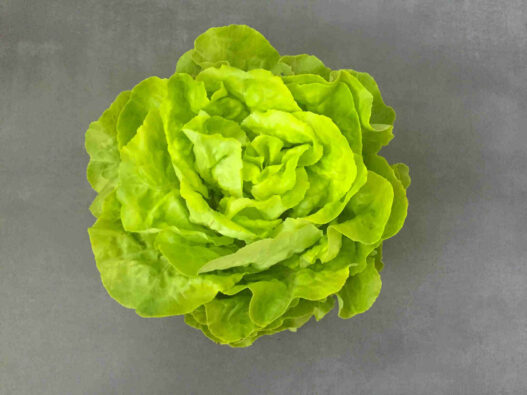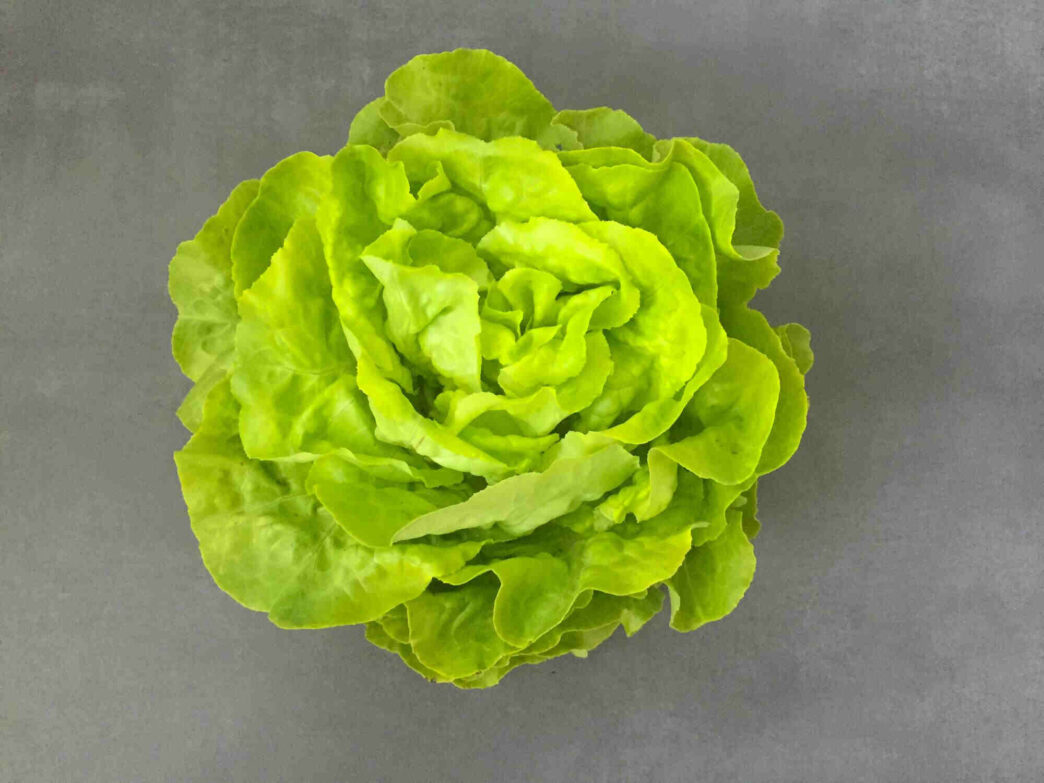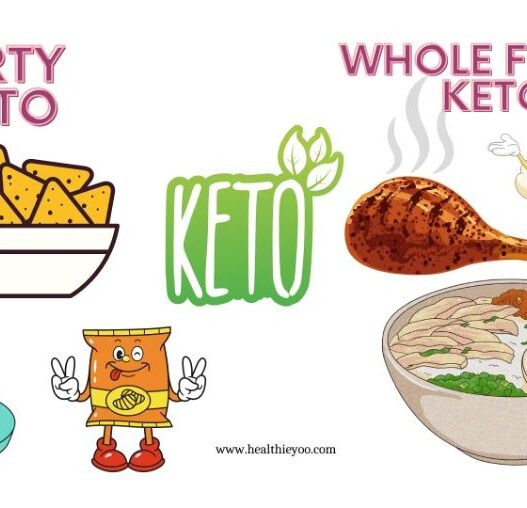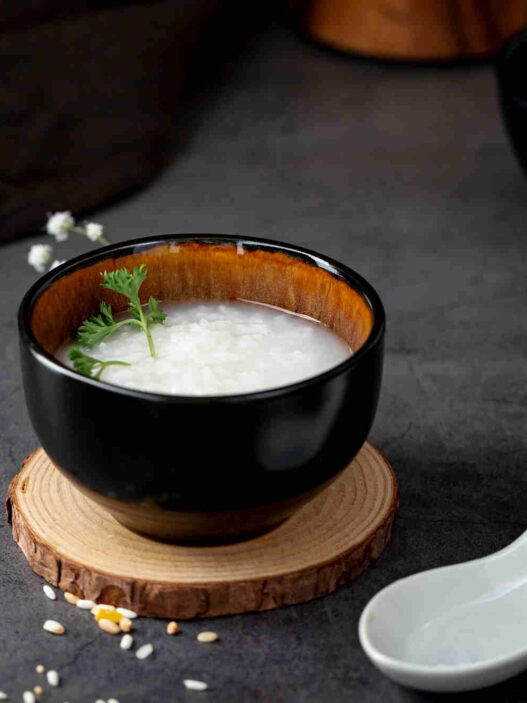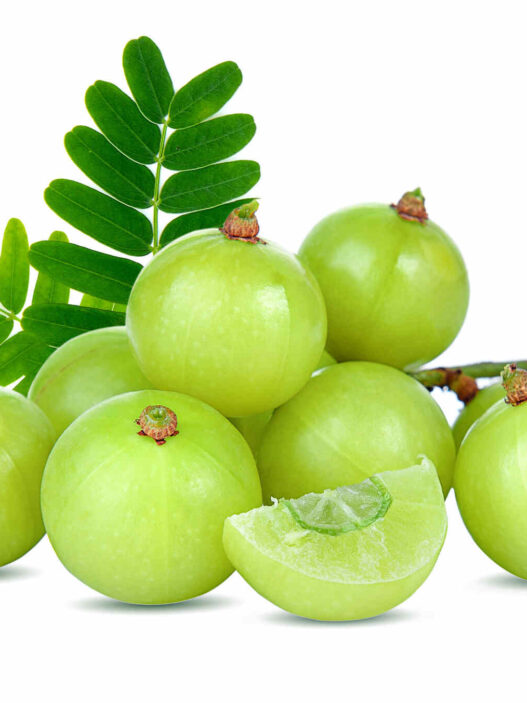Butterhead lettuce, also known as Butter lettuce, is a type of lettuce that is known for its delicate, buttery flavor and soft texture. It is a member of the Lactuca sativa family (Lactuca sativa var. capitata). Though there are several varieties of lettuce, butterhead is one of the most consumed varieties in addition to leaf type, iceberg, and stem varieties. Within the butterhead or butter lettuce types, there are several popular varieties such as Boston lettuce, Bibb lettuce, Buttercrunch, or Four Seasons lettuce (also known as The Marvel of Four Seasons Lettuce), etc. Here are the characteristic features, nutrition profile, and health benefits of butterhead lettuce and its varieties.
Butterhead lettuce has loose curly leaves and is often used in sandwiches. Butter lettuce is one of the milder-tasting types of lettuce with a good nutritional profile being a rich source of vitamins and iron and low in calories.
Characteristic features of Butterhead/ Bibb/ Boston/ Buttercrunch/ Marvel of Four Seasons Lettuce
Shape & Texture
Butter lettuce is characterized by its loosely formed small head of spherical leaves that have a delicate, buttery texture.
Color
The leaves are typically a pale green color and are slightly curved. The outer leaves are darker colored or brownish and can be easily bruised. Their oily leaf texture is attractive to the consumer.
Taste
The taste is mild and slightly sweet, making it a versatile lettuce that can be used in a variety of dishes such as salads and sandwiches.
Nutrients & Health Benefits of Butter Lettuce / Butterhead Lettuce
One of the best things about Butter lettuce or Bibb lettuce is that it is very nutritious. It is low in calories and high in vitamins and minerals such as vitamin A, vitamin K, and folate.
Butterhead lettuce also contains antioxidants and other beneficial compounds that can help support overall health. It also contains compounds with anticancer activities. It is also high in fiber and is heart-healthy.
Some of the health-promoting bioactive constituents of butter lettuce include:
Polyphenols
Flavonoids (Quercetin glycosides, Kaempferol glycosides), Flavones (Luteolin), Anthocyanins (Cyanidin), Carotenoid (Lutein, beta carotene), Apigenin, and minor quantities of coumarins are present. These compounds are known antioxidants and anti-inflammatories with the potential to fight several diseases.
Sesquiterpene lactones
Butter Lettuce is the main dietary source of sesquiterpene lactones (Lactucin, Lactucopicrin) which has been linked to the degree of bitterness. Sesquiterpene lactones are believed to provide protection against cardiovascular diseases and cancer.
Folate (Vitamin B9)
Butterhead lettuce is high in folate (vitamin B9) mainly Tetrahydrofolate. However, the looseleaf and crisp head variety contains even higher folate levels than the butterhead lettuce. Folate is a water-soluble vitamin important for the functioning of cells of the body. Folate and iron help RBCs to make hemoglobin which helps in the transport of oxygen in the body.
Some people say that the butterhead variety is high in iron but in reality, the iron content is highest in some of the other varieties of lettuce.
Ascorbic acid (Vitamin C)
Butter lettuce contains vitamin C but is only a moderate source of vitamin C. The Salanova Rossa variety has the maximum vitamin C content. Vitamin C is a water-soluble vitamin and a powerful antioxidant.
Tocopherol (Vitamin E)
A moderate amount of vitamin E is present in butter lettuce. Four seasons variety has a relatively higher amount of vitamin E as compared to other butterhead lettuce varieties such as buttercrunch, Bibb, or Boston. Vitamin E is a fat-soluble vitamin and a strong antioxidant. It helps elevate our immune system.
Vitamin K
Vitamin K is a fat-soluble vitamin and the two forms of vitamin K are Phylloquinone and Menaquinones. The main dietary type is phylloquinone available in green leafy vegetables. Butterhead lettuce is a significant source of dietary phylloquinone. Vitamin K is important for making proteins required for the clotting of blood. It also helps in making osteocalcin, a protein important for bone formation.
Overall, the butterhead and iceberg variety of lettuce has a relatively lower phytochemical content as compared to other varieties of lettuce. Elicitors have been used to increase their bioactive molecules such as polyphenols and carotenoids.
Butterhead Lettuce Or Butter Lettuce Varieties
The two common varieties of butter lettuce are Bibb and Boston. Other varieties are buttercrunch lettuce, Four Seasons (The Marvel of Four Seasons), etc. They are easier to grow.
Bibb Lettuce
Bibb lettuce, named after the farmer John Bibb in Kentucky, Frankfurt, is a variety of butter lettuce grown in Europe and is extremely popular. It has a buttery feel, and it melts in your mouth. Both Bibb and the Boston varieties of butterhead lettuce are popularly used. The leaves of Bibb lettuce are large and loosely folded on the outer side and usually dark green in color on the outside and lighter inside.
Boston Lettuce
The leaves of Boston Lettuce are slightly larger in size than the Bibb Lettuce. While the Bibb Lettuce variety is green in color, the Boston Lettuce variety can be red-leaf lettuce or yellowish in color. It has the same buttery texture as the Bibb lettuce.
Buttercrunch lettuce
Some other common varieties of butter lettuce are buttercrunch lettuce, which is quite tender and soft from the outside but has a creamy yet crunchy texture inside.
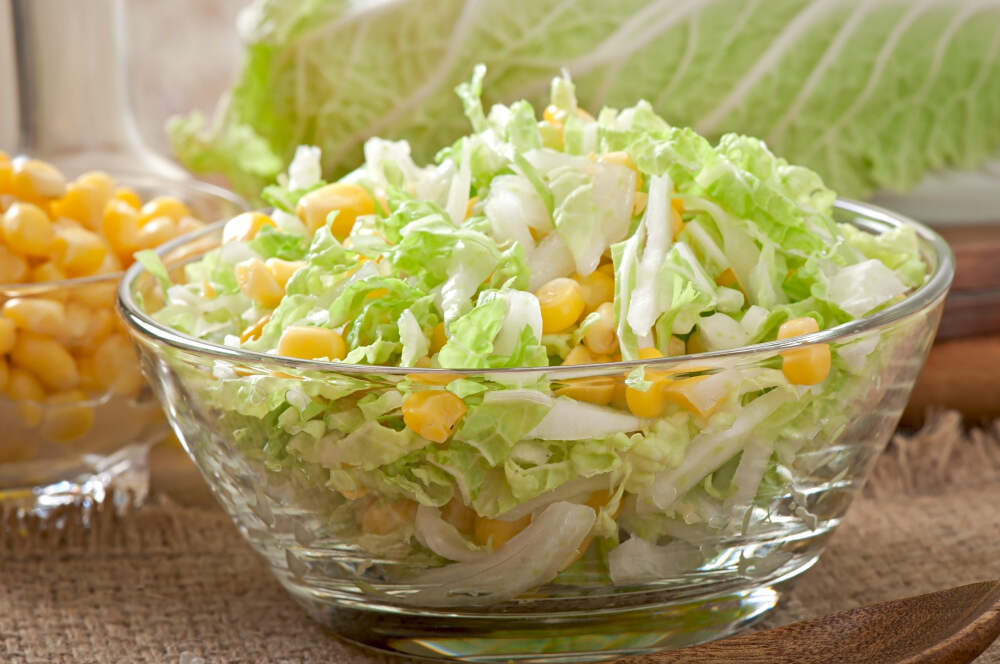
Four Seasons or The Marvel of Four Seasons Lettuce
The four seasons variety of butterhead lettuce is beautiful with red outer leaves and inner green leaves, hence popularly known as the Marvel of Four Seasons lettuce. It can be added to a salad to make it look beautiful.
Other common varieties of butter lettuce include both green-leaf and red-leaf varieties of butterhead lettuce.
Green Leaf Lettuce Variety
- Bibb
- Dark green Boston
- Green salanova
- Salanova verde
- Buttercrunch
- Dynamite
- Victoria
- Divina
- Santoro
Red Leaf Lettuce Variety
- Four seasons or Marvel of Four Seasons
- Red salanova
- Salanova rossa
- Flashy butter oak
- Red butterhead (Skyphos)
- Yugoslavian red
- Carmona
Availability and Storage
Butter lettuce is generally available year-round but is at its peak during the summer months. It is best stored in a plastic bag in the refrigerator and should be used within a few days of purchase to ensure that it stays fresh. It has been recommended not to remove the root of Bibb lettuce until you are ready to eat. If you buy without roots, it won’t stay fresh for long.
Conclusion
The composition of nutrients and antioxidant potential of butter lettuce can vary between varieties of butterhead lettuce, including the red-leaf and green-leaf varieties. Another challenge is the amount of these natural bioactive chemicals to reach the bloodstream, and a number of factors affect the bioavailability of the nutrients present. Despite the challenges, butterhead lettuce is nutritious with full of natural phytochemicals, antioxidants, vitamins, and minerals.
Butter lettuce is commonly used in salads and sandwiches, but it can also be used as a garnish or as a base for other dishes such as soups or stews. It can also be used as a wrap for sandwiches and other fillings.
Check out other types of lettuces too.
